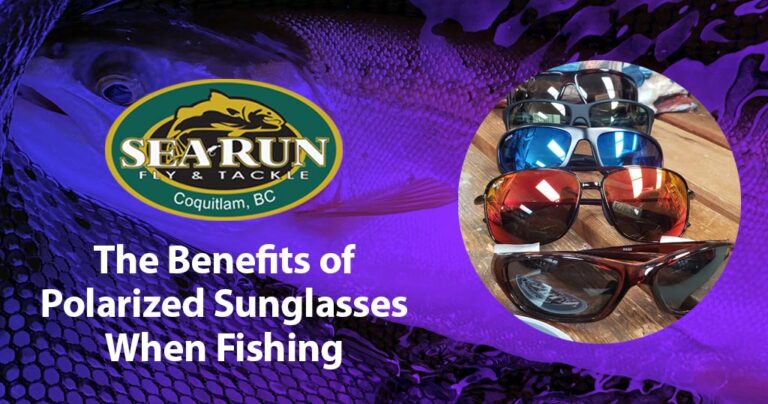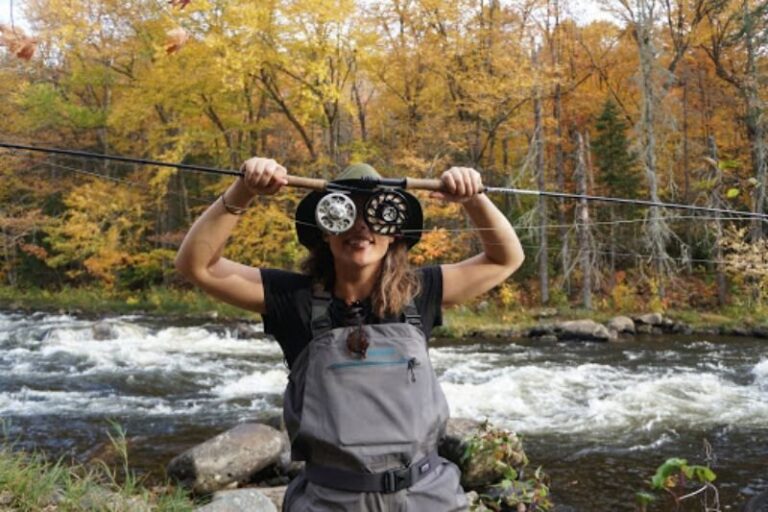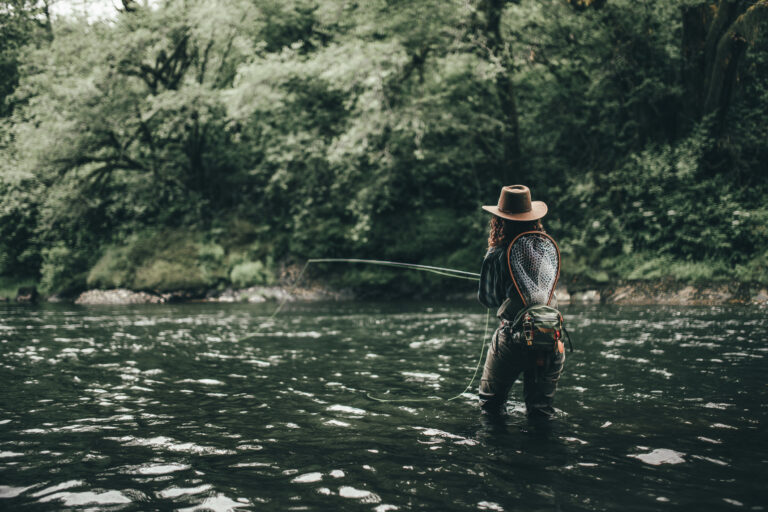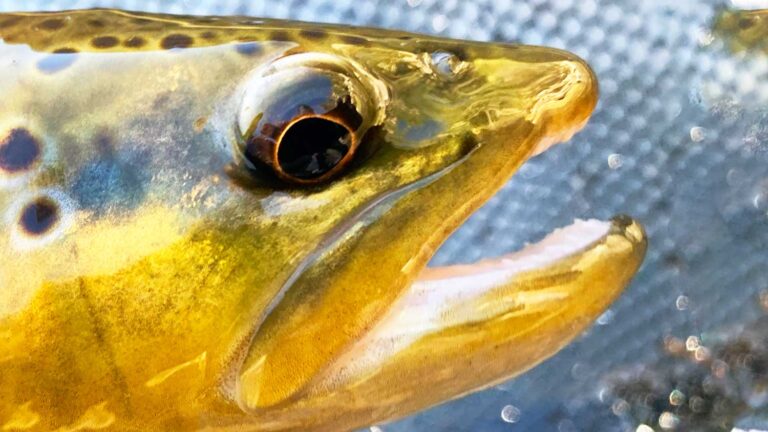To read tides for successful flats fishing, understand the correlation between tidal patterns and fish behavior. Knowing how tides affect feeding and movement habits will increase your chances of a fruitful fishing trip.
Tides determine the water depth and movement, influencing where fish gather and how they feed. By observing the tide tables and understanding the impact on a specific fishing spot, you can plan your trip accordingly and target species at the right time.
Pay attention to incoming and outgoing tides, as they create opportunities for fish to search for food. Keep in mind that certain fish species prefer different tidal stages, so familiarize yourself with their preferences to optimize your fishing success.
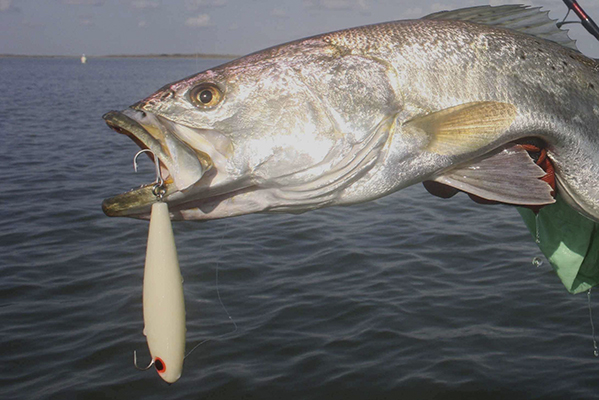
Credit: www.panews.com
Understanding Tides
Tides are a crucial factor to consider for successful flats fishing. By understanding how tides work and their different types, you can greatly improve your chances of having a productive fishing trip. In this section, we will explore the definition of tides, their causes, the different types of tides, and how tides are measured.
Definition Of Tides And Their Causes
Tides refer to the regular rise and fall of the ocean’s surface caused by the gravitational forces exerted by the moon and the sun. As the moon orbits the earth, it creates a gravitational pull, which causes the water in the ocean to bulge towards the moon.
This bulge of water is referred to as a high tide. At the same time, on the opposite side of the earth, where the gravitational pull is weaker, a second bulge is formed, leading to another high tide. The areas between these bulges experience low tides.
Explanation Of The Different Types Of Tides
Tides can be classified into two main types – spring tides and neap tides. These tides occur as a result of the combined gravitational pull of the moon and the sun.
- Spring tides:
- Spring tides occur when the gravitational forces of the moon and the sun align, creating a greater tidal range.
- During spring tides, high tides are higher than usual, and low tides are lower than usual.
- Spring tides typically occur during the full moon and new moon phases.
- Neap tides:
- Neap tides occur when the gravitational forces of the moon and the sun are perpendicular to each other, resulting in a smaller tidal range.
- During neap tides, high tides are lower than usual, and low tides are higher than usual.
- Neap tides typically occur during the first and third quarter moon phases.
How Tides Are Measured
To accurately measure tides and predict their patterns, various methods and instruments are employed. Here are some common methods used for tide measurement:
- Tide gauges:
- Tide gauges are devices that measure the water level of the ocean over time.
- They consist of a sensor placed in the water that records the changes in sea level.
- Tide gauges help in monitoring and predicting tides, aiding fishermen in determining the best fishing times.
- Tide tables:
- Tide tables provide fishermen with detailed information about the times and heights of tides for specific locations.
- These tables are created using data collected from tide gauges and other sources.
- By consulting tide tables, fishermen can plan their fishing trips according to the most favorable tide conditions.
Understanding tides is essential for flats fishing. By knowing the definition of tides, their causes, the different types of tides such as spring tides and neap tides, and how tides are measured using methods like tide gauges and tide tables, you can make informed decisions about when and where to fish.
So, the next time you head out to the flats, don’t forget to take tides into account for a successful fishing experience.
Factors Affecting Tides
The moon’s gravitational pull:
- The moon plays a significant role in generating tides due to its gravitational pull on earth’s oceans and seas.
- Tides are primarily influenced by the moon’s position in relation to the earth and the sun.
- The moon’s gravitational force creates two high tides and two low tides each day.
- During a new moon or full moon phase, when the moon, earth, and sun align, the gravitational forces combine and result in higher tidal ranges known as spring tides.
- Conversely, during a first quarter or third quarter moon phase, when the moon and sun are at right angles, the gravitational forces partially cancel out, resulting in lower tidal ranges known as neap tides.
- Understanding the moon’s phase and its impact on tides is crucial for successful flats fishing.
The sun’s gravitational pull:
- Although less powerful than the moon’s gravitational pull, the sun also affects tides.
- When the sun is directly aligned with the moon and earth (during new moon or full moon phases), it reinforces the gravitational forces at play, resulting in spring tides with higher tidal ranges.
- During first quarter or third quarter moon phases, when the sun and moon are at right angles, the sun’s gravitational pull partially counteracts the moon’s pull, leading to neap tides with lower tidal ranges.
- While the sun’s influence is secondary to the moon’s, it should still be taken into consideration when reading tides for flats fishing.
Other factors influencing tides:
- Weather conditions: Changes in atmospheric pressure, wind strength, and storms can alter tidal patterns and cause deviations from the predicted tide levels.
- Coastal geography: The shape of the coastline, including bays, estuaries, and channels, can amplify or dampen tides as they move along the coast.
- Wind patterns: Strong winds blowing in a consistent direction can push water towards the shore, resulting in higher tides, while offshore winds can cause water to recede, leading to lower tides.
- It is important to consider these additional factors when reading tides for flats fishing, as they can impact the actual water levels and affect fish behavior.
Reading Tidal Charts
Importance Of Tidal Charts In Fishing
Understanding tides is crucial for successful flats fishing. Tidal charts are valuable tools that provide valuable information about the movement and height of tides in a specific location. By learning how to read tidal charts effectively, anglers can maximize their chances of finding fish in the right conditions.
Here are some key points to keep in mind when reading tidal charts:
Understanding Key Elements Of Tidal Charts
Tidal charts contain various important elements that anglers need to understand before heading out for a fishing trip. These elements include:
- Time and date: Tidal charts provide precise information about the time and date of high and low tides. This helps anglers plan their fishing trips accordingly, ensuring they are present during the most favorable tide conditions.
- Height of tide: Tidal charts also indicate the vertical distance between low and high tides. This information is important as certain species of fish prefer different tidal ranges. Understanding the height of the tide enables anglers to target areas where fish are likely to be feeding.
- Direction of flow: Tidal charts indicate the direction in which the water is flowing during a specific tide. This knowledge is crucial for anglers as it helps them determine the best positions to present their bait or lures.
- Tidal range: The tidal range represents the difference in water level between high and low tides. Knowing the tidal range is important as it affects the availability of feeding grounds for fish. For example, a larger tidal range often exposes more areas for fish to feed, making it an ideal time for flats fishing.
Interpreting Tidal Information On Charts
Once anglers have a good understanding of the key elements on tidal charts, it’s essential to interpret this information effectively. Here are some tips for interpreting tidal information:
- Analyze the tide progression: Look for patterns in the tidal charts to identify the best times for fishing. Pay attention to specific phases of the tide, such as the incoming or outgoing tide, which can influence fish behavior.
- Consider local factors: While tidal charts provide general information, it’s important to consider local factors that may affect the tides, such as geography and weather conditions. These factors can impact the timing and intensity of tides, ultimately affecting fish feeding patterns.
- Combine knowledge with experience: Reading tidal charts is a skill that develops with experience. By combining your knowledge of tides with personal observations and fishing experiences, you’ll be able to refine your understanding and improve your success on the flats.
By utilizing tidal charts effectively, anglers can gain valuable insights into the best times to fish and the locations where fish are likely to gather. Understanding the importance of tidal charts and their key elements will undoubtedly enhance your flats fishing experience.
So, grab a chart, plan your trip, and get ready to reel in some exciting catches!
Understanding Tidal Currents
Tidal currents play a crucial role in successful flats fishing. These shifting water movements can significantly influence the behavior and feeding patterns of fish. To make the most of your fishing expedition, it’s important to have a good understanding of tidal currents and their impact.
Let’s delve deeper into the definition and significance of tidal currents, how they affect fishing, and how you can identify and predict them.
Definition And Significance Of Tidal Currents
- Tidal currents are the horizontal flow of water caused by the rise and fall of tides.
- These currents occur due to the gravitational forces exerted by the moon and the sun on the earth’s oceans.
- Tidal currents can be either flood currents (incoming tide) or ebb currents (outgoing tide).
- Understanding tidal currents is vital as they dictate the movement of marine life, including baitfish and their predators.
- Tidal currents greatly influence the distribution of baitfish, making certain areas more attractive to larger game fish.
How Tidal Currents Impact Fishing
Tidal currents have a direct impact on fishing, affecting both the behavior of the fish and the angler’s strategy. Here’s how:
- Tidal currents provide a conveyor belt for baitfish, carrying them along and attracting larger predatory fish. Understanding these currents helps anglers position themselves to intercept this feeding frenzy.
- Fish tend to be more active during a tide change, especially during the peak of the incoming or outgoing tide.
- The movement of water caused by tidal currents creates eddies and turbulence, concentrating baitfish and making them vulnerable to predatory species.
- Tidal currents determine the speed and direction of drift when fishing from a boat, requiring adjustments in casting techniques and boat positioning.
- The strength of tidal currents affects the accessibility of certain fishing spots, making it important to plan your fishing trips according to favorable tidal conditions.
Identifying And Predicting Tidal Currents
Identifying and predicting tidal currents is the key to successful flats fishing. Here are some helpful tips:
- Consult tide charts or use online resources to determine the timing and magnitude of tides in your fishing location.
- Observe physical features of the fishing area, such as channels, cuts, and points, as they can influence the flow and direction of tidal currents.
- Pay attention to wind direction as it can interact with tidal currents, creating areas of higher or lower water movement.
- Look for visible signs of tidal currents, such as ripples, swirls, or debris on the water’s surface.
- Use a fishfinder or depth sounder to detect changes in underwater structure and identify areas where tidal currents may be stronger or weaker.
- Consider the moon phase and its relationship with tide changes, as certain moon phases can result in stronger or more predictable tidal currents.
Remember, understanding tidal currents is a valuable tool that can significantly enhance your flats fishing experience. By recognizing the definition and significance of tidal currents, understanding how they impact fishing, and knowing how to identify and predict them, you’ll be well-prepared to make the most of your time on the water.
Happy fishing!
High Tide Fishing Strategies
Advantages And Challenges Of Fishing During High Tide
Fishing during high tide can offer unique advantages and challenges for flats fishermen. Understanding these factors can significantly increase your chances of a successful fishing trip. Here are a few key points to consider:
- Advantages:
- Increased water depth provides access to areas that may be inaccessible during low tide.
- Fish tend to move closer to the flats, making them easier to locate.
- The higher water level can improve visibility, allowing you to spot fish more easily.
- Challenges:
- Stronger currents during high tide can make it more difficult to control your boat or kayak.
- Fish may scatter in search of a more comfortable environment.
- Deeper water can make it challenging to effectively present your bait or lure.
Tips For Successful High Tide Fishing
To make the most of your high tide fishing excursion, consider the following tips:
- Targeting shallow areas and grass flats:
- Focus your efforts on shallow areas and grass flats that are still accessible during high tide.
- Look for drop-offs, channels, or cuts within these areas, as fish often use them as highways.
- Keep an eye out for baitfish, birds, or other signs of fish activity that can help you locate the best spots.
- Optimal bait and lure selection:
- Choose bait or lures that mimic the prey species found in the area you’re fishing.
- Soft plastic jerkbaits, spoons, and topwater lures are popular choices for targeting fish on the flats.
- Consider using live bait such as shrimp, crabs, or small baitfish, as they can be highly effective during high tide.
- Adjusting fishing techniques:
- Use longer casts to cover more water and increase your chances of encountering fish.
- Gradually retrieve your bait or lure to imitate natural movement.
- Pay attention to the speed and direction of the current, as it can affect how fish behave and feed.
Remember, adapting your strategy to the conditions and using techniques that play to the advantages of high tide can make a significant difference in your fishing success. Embrace the challenges and enjoy the unique opportunities that high tide fishing offers.
Low Tide Fishing Strategies
Advantages And Challenges Of Fishing During Low Tide
Fishing during low tide can be both advantageous and challenging. Understanding the unique aspects of low tide fishing can greatly improve your chances of success. Here are some key points to consider:
- Advantages:
- Increased visibility: With the water receding, you can have a clearer view of the flats and spot fish more easily.
- Concentrated fish: As water levels drop, fish tend to congregate in deeper channels and drop-offs, making them easier to locate and target.
- Accessible areas: During low tide, previously submerged areas become accessible, allowing you to explore new fishing grounds.
- Challenges:
- Shallow water: Low tide means less water depth, which can make it challenging to navigate and find fish in shallow areas.
- Spooked fish: As the water level decreases, fish can become more skittish and cautious, making it trickier to approach them without spooking them.
- Limited feeding opportunities: With less water, fish may have restricted access to their preferred feeding areas, reducing their feeding activity.
Tips For Successful Low Tide Fishing
To increase your chances of a successful low tide fishing expedition, consider the following tips:
- Targeting channels and drop-offs:
- Focus on fishing in deeper channels and drop-offs where fish tend to gather during low tide.
- These areas act as a refuge for fish and provide them with access to food as the water levels drop.
- Using topographic features to your advantage:
- Look for distinct features such as sandbars, grass beds, or structures like rocks and oyster beds.
- These features often hold baitfish and attract larger predatory fish seeking an easy meal.
- Adjusting fishing techniques:
- Use lighter tackle and smaller lures to prevent scaring off fish in the shallower water.
- Consider using a stealthy approach to avoid spooking fish, such as making quieter casts and using longer leaders.
- Timing is crucial:
- Plan your fishing trips around the tide charts to ensure you’re fishing during the lowest point of the low tide.
- This will give you the best opportunity to access previously submerged areas and target actively feeding fish.
Remember, adapting your strategies and being patient are crucial when fishing during low tide. Embrace the unique challenges and take advantage of the opportunities it presents. With the right approach, you can have a successful low tide fishing experience.
Best Tides For Flats Fishing
Understanding The Concept Of “Tide Windows”
Tide windows refer to specific time periods during a tidal cycle when the conditions are optimal for flats fishing. By understanding tide windows, anglers can significantly increase their chances of a successful fishing trip. Here are the key points to consider:
- Timing is crucial: Each location has its own unique tide windows, so it’s important to research and understand the tidal patterns of the area you plan to fish in.
- Rising and falling tides: Tide windows occur during the transition between the low tide and high tide, or vice versa. These periods create a change in water movement that attracts fish to the flats.
- Timing relative to sunrise and sunset: The best tide windows often coincide with the optimal fishing hours around sunrise or sunset when fish are most active.
- Weather factors: It’s essential to take weather conditions, such as wind and heavy rain, into account when determining the most favorable tide windows.
Identifying The Best Tide Conditions For Flats Fishing
To increase your chances of success while flats fishing, it’s crucial to identify the best tide conditions. Here are the key points to consider:
- Incoming tide: An incoming tide, also known as a rising tide, is generally considered advantageous for flats fishing. During this tide, water flows onto the flats, causing fish to move in search of food.
- Outgoing tide: An outgoing tide, also known as a falling tide, can be equally productive for flats fishing. As the water recedes from the flats, it concentrates fish in deeper channels, creating excellent feeding opportunities.
- Slack tide: It’s important to note that the period of slack tide, when the water movement is minimal between the high and low tide, is generally less favorable for flats fishing. Fish are less active during this time as there is limited water movement.
Factors To Consider When Planning Your Fishing Trip
While tides play a significant role in flats fishing, several other factors should be taken into account when planning your fishing trip. Here are a few essential considerations:
- Wind direction and strength: Wind can influence water movement and impact fishing conditions. Check the wind forecast and choose a location that offers protection from strong winds.
- Water clarity: Clear water is crucial for sight fishing on the flats. Look for areas with good water clarity to increase your chances of spotting fish.
- Temperature and weather: Fish are sensitive to changes in temperature and weather conditions. Consider the fish species you’re targeting and their preferred temperature ranges.
- Moon phase: The moon phase can affect tidal movement, with stronger tides occurring during a full or new moon. Consider how moon phases may influence your target species’ feeding patterns.
- Local knowledge and fishing reports: Seek advice from local anglers and stay updated with fishing reports. They can provide valuable information on the most productive tides and fishing spots.
Remember, understanding the concept of tide windows, identifying the best tide conditions, and considering other crucial factors will significantly enhance your chances of a successful flats fishing adventure. So plan wisely, prepare your gear, and get ready to reel in some remarkable catches on the flats!
Tools And Resources For Reading Tides
Understanding tides is a crucial skill for successful flats fishing. By knowing when the tides are high or low, you can strategically plan your fishing trips and increase your chances of a fruitful outing. Luckily, there are various tools and resources available to help you read tides accurately.
Here are some options worth considering:
Mobile Apps For Tide Predictions
- Mobile apps have made it incredibly convenient to access tide predictions on the go. Whether you’re using an android or ios device, there are several apps available that can provide you with accurate and up-to-date tide information.
- Some popular mobile apps for tide predictions include tide chart, tides near me, and my tide times. These apps often allow you to search for specific locations, view tide tables, and set reminders for tide changes.
- With their user-friendly interfaces and the ability to customize settings, these apps make it easier than ever to plan your flats fishing adventures and optimize your time on the water.
Online Tide Charts And Websites
- Online tide charts and websites are another valuable resource for reading tides. These platforms usually offer comprehensive tide data for coastal areas worldwide, allowing you to find the information you need for your desired fishing location.
- Websites like noaa’s tide predictions and tides4fishing provide tide tables, graphs, and even detailed information on tidal currents. Some websites even offer additional features such as moon phase calendars and sunrise/sunset times.
- By accessing these websites, you can gain an in-depth understanding of tides and make informed decisions about your flats fishing trips.
Importance Of Local Knowledge And Experiences
- While mobile apps and online resources can be incredibly helpful, nothing beats the importance of local knowledge and experiences. The expertise of seasoned anglers who know the area well can provide invaluable insights into reading tides effectively.
- Locals have the advantage of understanding the unique characteristics of their fishing grounds, including how tides interact with the specific features of the flats and channels. They are familiar with the patterns, nuances, and hidden spots that can significantly impact fishing success.
- Engaging with local fishing communities, charter fishermen, or joining fishing forums can help you tap into this wealth of knowledge. By combining this information with the tools and resources mentioned above, you can enhance your ability to read tides and improve your flats fishing outcomes.
Remember, mastering the skill of reading tides takes practice and experience. By utilizing mobile apps, online tide charts, and local knowledge, you’ll be well-equipped to decipher and make the most of the tidal patterns during your flats fishing adventures. Happy fishing!
Conclusion
Understanding tides is essential for successful flats fishing. By learning how to read tides, you can predict the movement of fish and strategically plan your fishing trips. Paying attention to the timing of high and low tides, as well as the strength and direction of the current, can greatly increase your chances of landing a trophy catch.
Being able to identify key feeding areas during different tides allows you to position yourself in the right spot at the right time. Tides affect the availability of food, the visibility of the water, and the behavior of fish, all of which impact your ability to catch them.
Remember to keep an eye on tide charts, look out for telltale signs of feeding activity, and adapt your fishing tactics accordingly. With a solid understanding of tides, you’ll be well-equipped to make the most of your flats fishing adventures.
Happy fishing!

